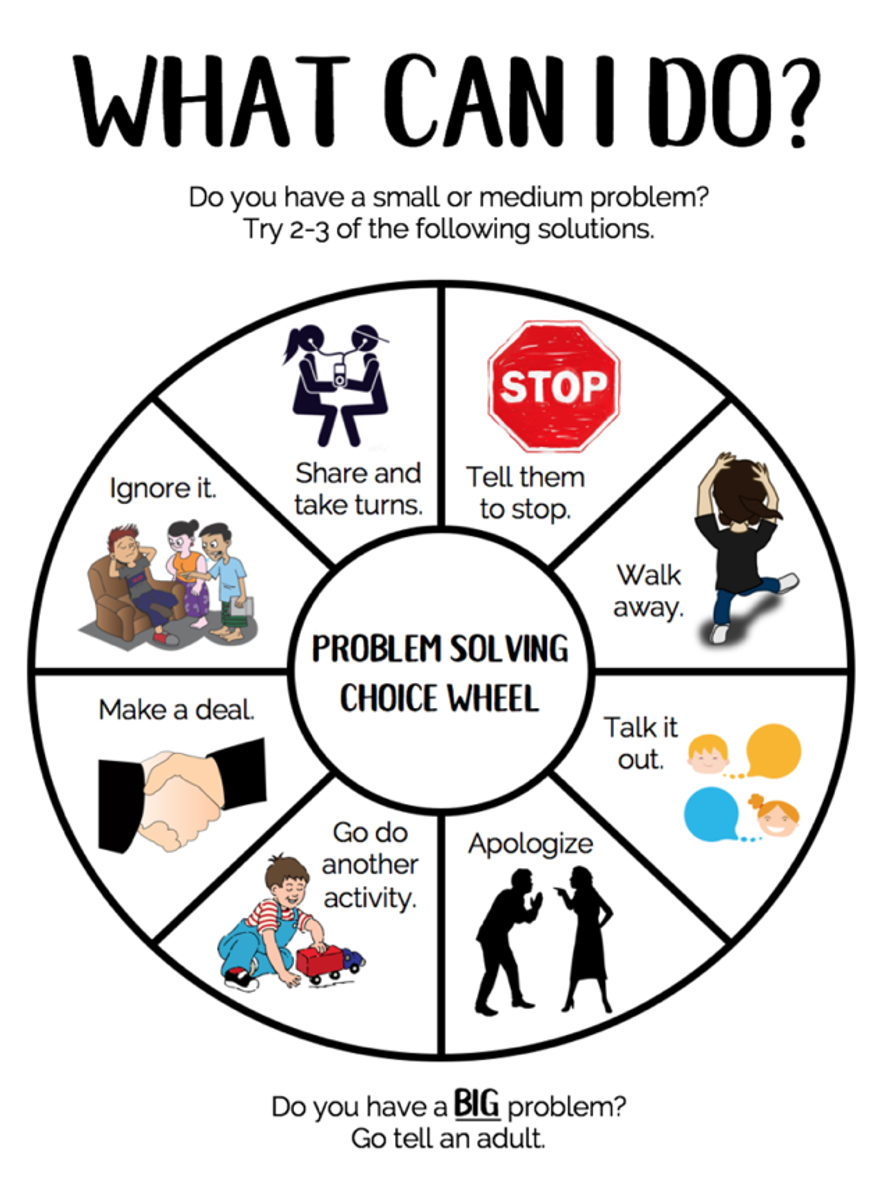Student Wellbeing
Student Wellbeing encompasses the following areas: Student Engagement, Student Connectedness, Classroom Climates, Inclusion and Prevention to Intervention

Student Wellbeing
Student Wellbeing encompasses the following areas: Student Engagement, Student Connectedness, Classroom Climates, Inclusion and Prevention to Intervention
From: https://www.speechtherapystore.com/problem-solving-wheel/


Students who act out in aggressive behaviours often do so because they struggle with identifying solutions to their problems. A Problem-Solving Wheel can help teach your students to learn how to independently solve a problem.
A problem-solving wheel also known as the wheel of choice or solution wheel is a great way to give students a visual of choices to help them either calm down when they are upset or help them solve a problem with a classmate.
It is best to use the problem-solving wheel when students are dealing with a “small” problem. “Small” problems include conflicts that cause “small” feelings of annoyance, embarrassment, boredom, etc. If the student has a BIG problem they should practice telling an adult. “BIG problems” are situations that are scary, dangerous, illegal, etc.
Problem Solving Wheel, You can make it for home too.
Children don’t always know what to do when they are experiencing conflicts with others. When students are stressed and in the moment of a conflict they can often forget how to solve the problem A problem-solving choice wheel can help them learn different ways to solve their problems. When you create a consistent pattern of how to solve problems children will eventually pick up on that pattern and begin to implement the pattern independently.
Involving children in the problem-solving process can help give them buy-in into using the system that they take part in creating. Help them to create their own ideas for how to solve “small” problems on their own. Your children might even surprise you and come up with some creative solutions.
In addition, for some of our children teaching feeling words can help them have the vocabulary necessary to express how they are feeling during a problem. We can start by naming children’s feelings for them and after some practice hopefully, the children will begin to use feeling words to describe how they are feeling during a conflict.
For example, “Sam the way you yelled, “no” and stomped your feet tell me that you are angry.” Talking to our children this way can help bring their attention to their feelings so they can eventually identify their own feelings.
Aggressive behaviours are often exhibited when a child struggles with identifying solutions to their problems. A problem-solving wheel can be a great way to give children a visual of choices to help them calm down and to solve a problem with a classmate, friend, parent, or trusted adult.